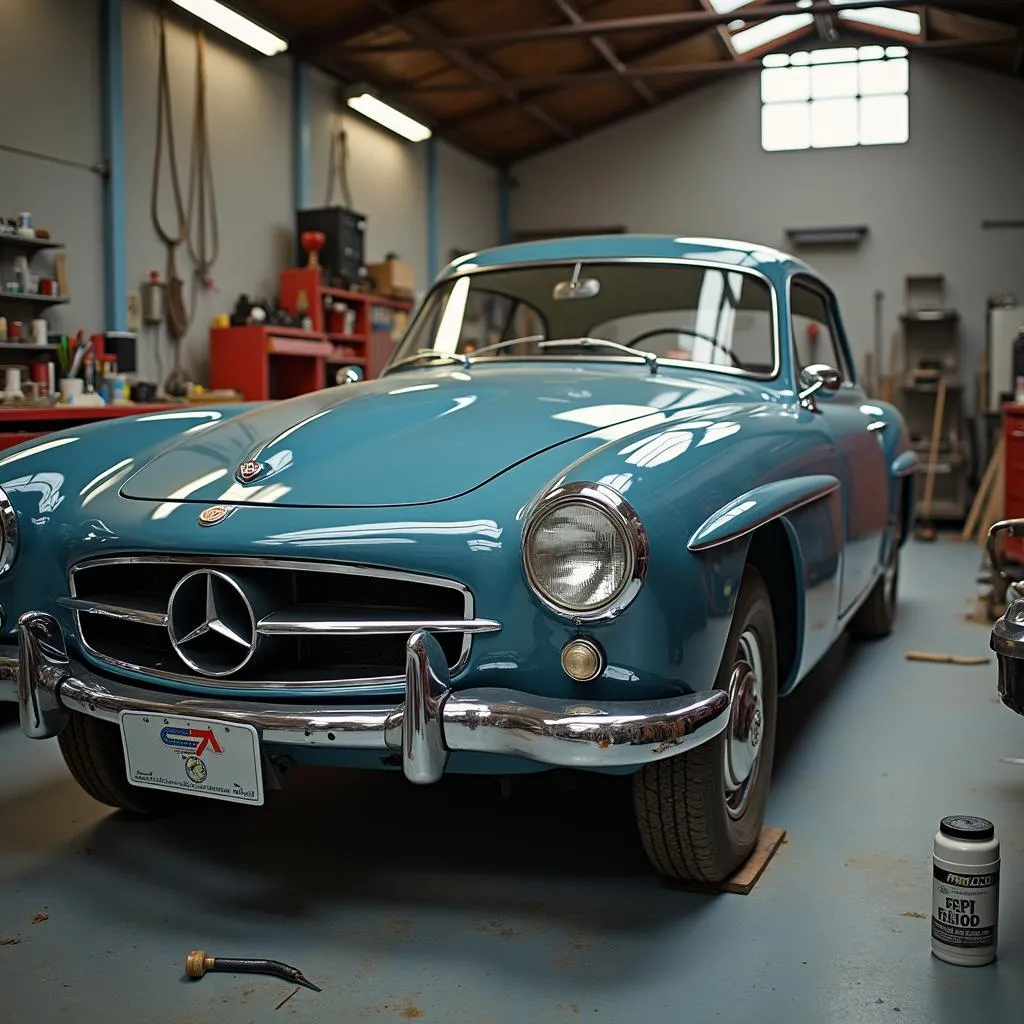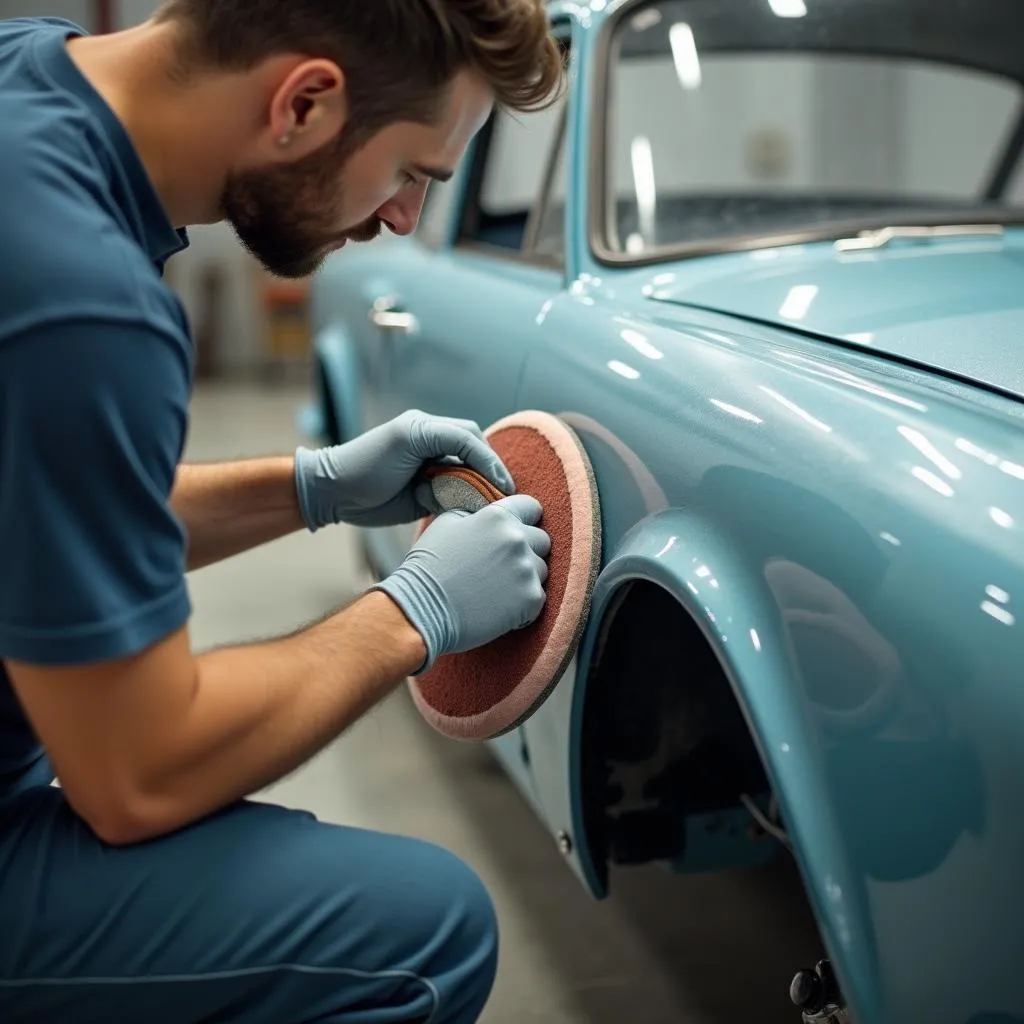Classic car paintwork is far more than just a protective layer. It’s the epitome of nostalgia, craftsmanship, and a mirror of the history that resonates in every scratch and curve. But the years leave their mark, and many a classic car enthusiast faces the question: How can you breathe new life into the shine of days gone by?
The Magic of Classic Car Painting
Imagine: A sunny day, the scent of gasoline and leather in the air, and your freshly painted classic car gleaming in the sunlight. This very image makes the hearts of classic car enthusiasts beat faster. “Classic car paintwork is like the soul of the vehicle,” says Dr. Karl Wagner, a restorer and author of the book “Automobile Zeitzeugen”. “It tells stories of past journeys, adventures, and the dedication with which these vehicles were cared for.”
But the magic of classic car painting also requires a deep understanding of the history and technology behind it.
From Nitrocellulose to Water-Based: A Journey Through Painting Techniques
 Classic car bodywork being prepared for painting in a workshop
Classic car bodywork being prepared for painting in a workshop
In the past, classic cars were often treated with nitrocellulose lacquers. These paints are characterized by their deep gloss and hard surface. However, they are also more susceptible to scratches and UV radiation. Today, modern water-based paints are frequently used, which are more environmentally friendly and offer high color brilliance.
“The choice of the right painting technique depends on the condition of the vehicle and the owner’s wishes,” explains John Miller, a renowned painter from London. “Sometimes it’s about restoring the original condition, sometimes about adding an individual touch.”
Classic Car Painting: What to Consider
Restoring classic car paintwork is a complex task that requires a lot of experience and finesse. Here are some important points to consider:
1. Assessment and Damage Analysis
Before the actual painting can begin, the condition of the bodywork must be carefully examined. Rust, dents, and paint damage must be meticulously documented.
2. Preparation is Key
 Detailed preparation of classic car bodywork before painting
Detailed preparation of classic car bodywork before painting
Thorough cleaning and degreasing of the surface is essential. Subsequently, rust spots are removed, dents are straightened, and unevenness is smoothed out with filler.
3. Choosing the Right Paint
As mentioned earlier, various paint systems are available. The choice of the right paint depends on the original condition of the vehicle, the desired finish, and, of course, the budget.
4. The Art of Painting
The actual painting is a manual process that requires the highest precision and experience. The paint is applied in several layers and then polished until the desired level of gloss is achieved.
Cost of Classic Car Painting
The cost of classic car painting can vary greatly depending on the effort involved and the chosen paint system. A partial repaint is possible starting from approximately 1,000 Euros, while a complete respray including bodywork can quickly cost 10,000 Euros or more.
Conclusion: An Investment That Pays Off
Painting a classic car is an investment in the future – in preserving the vehicle’s value and in the joy of driving.
Do you have questions about classic car painting or need assistance with restoring your classic? Feel free to contact us! Our experts at autorepairaid.com are ready to assist you.
More Interesting Topics About Classic Cars
- Classic Car Restoration: Step by Step to Your Dream Car
- Rust Protection for Classic Cars: How to Protect Your Classic
- Classic Car Spare Parts: Where to Find the Right Part?
Visit autorepairaid.com for more information and helpful tips about the world of classic cars!

